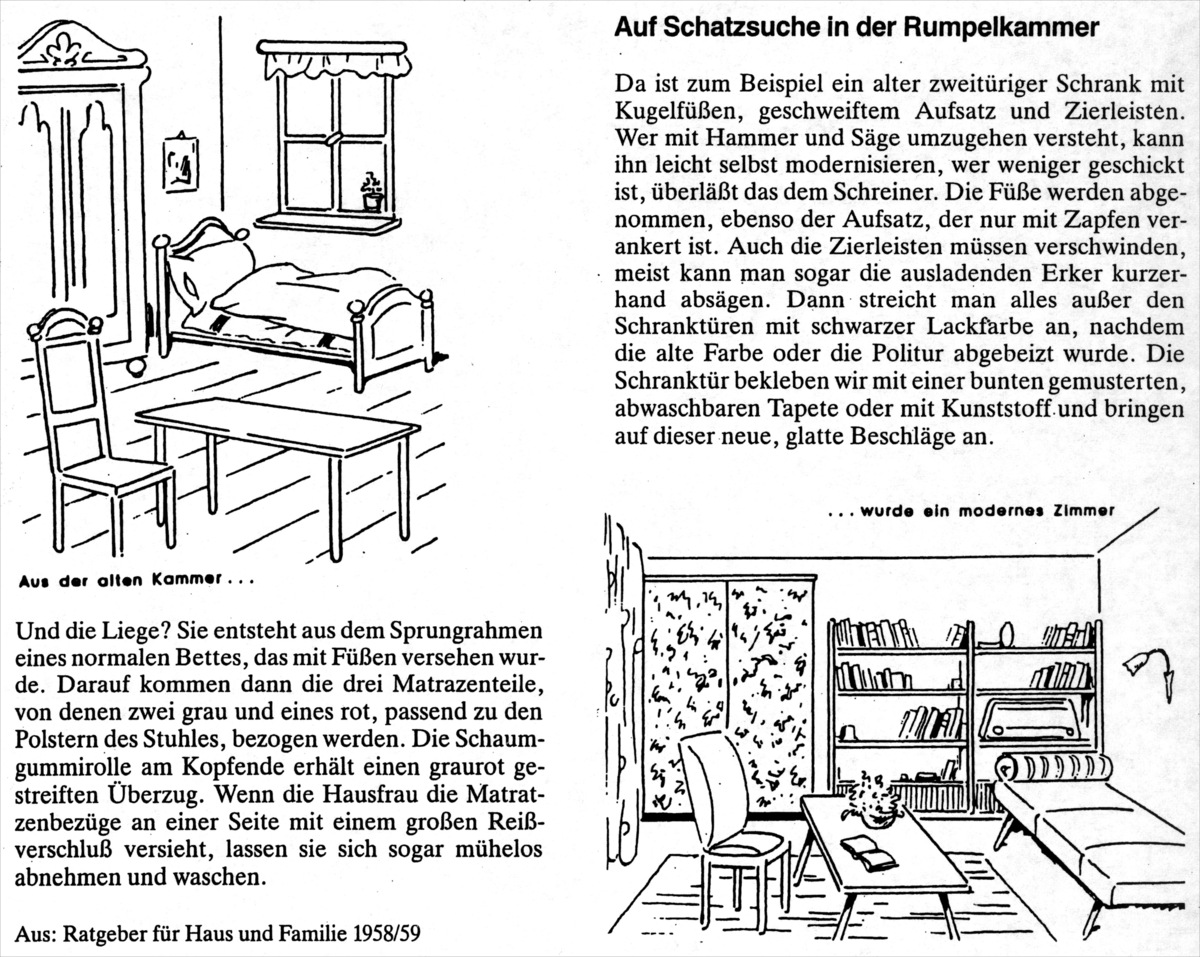Quelle
The old chamber . . . was turned into a modern room Here, for example, is an old, two-door wardrobe with bun feet, a
curved bonnet, and decorative molding. Anyone who is handy with a hammer
and saw can easily modernize it himself; those who are less handy should
leave it to the carpenter. The feet should be removed; the same goes for
the bonnet, which is only fasted with dowels. The decorative molding
also has to go, and in most cases one can simply saw off the protruding
window sill. Then, once the old paint or varnish has been stripped off,
you should paint everything except the wardrobe doors with black lacquer
paint. Then glue colorful, patterned, washable wallpaper or something
synthetic on the wardrobe doors, and attach sleek new fixtures. And the day bed? It was made from the box spring of a normal bed to
which legs were attached. We put three mattress segments on top of it,
two in gray and one in red, to match the chair cushions. We gave the
foam bolster at the head a gray-and-red cover. If the housewife puts a
zipper on one side of the mattress covers, then they can be easily
removed and washed.
Quelle:
Ratgeber für Haus und Familie 1958/59; abgedruckt in Angela Delille und Andrea Grohn, Hrsg., Perlonzeit. Wie die Frauen ihr Wirtschaftswunder erlebten. Berlin: Elefanten Press, 1985, S. 25.